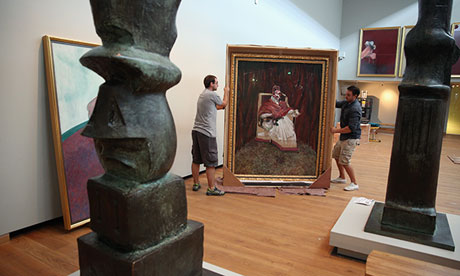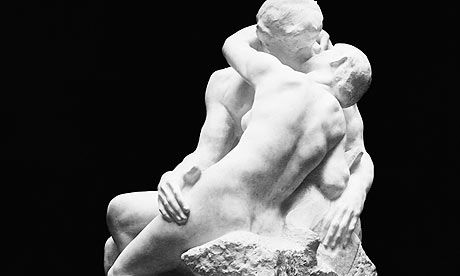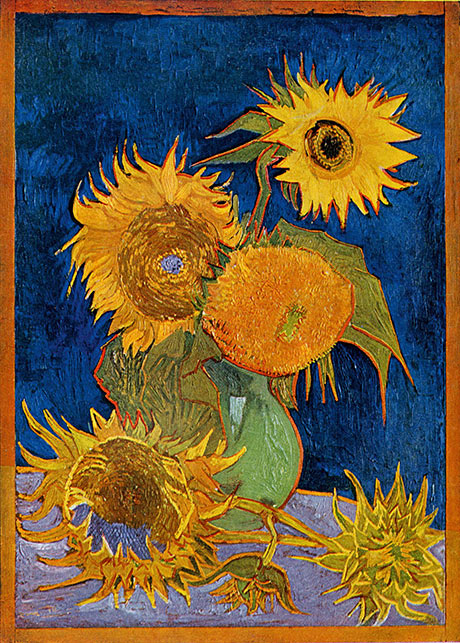
Compare and contrast … Francis Bacon and Henry Moore at the Ashmolean Museum, Oxford. Photograph: Oli Scarff/Getty Images
Exhibition of the Week
Francis Bacon/Henry Moore: Flesh and Bone
The paintings of Francis Bacon look extraordinarily powerful in this comparison of Britain's two most famous artists of the mid-20th century. It also includes a handful of moving nudes by Michelangelo, a hero to both men, from the Ashmolean Museum's outstanding collection of drawings.
Ashmolean Museum, Oxford OX1 from 12 September until 19 January
Tacita Dean
JG, the latest film by one of Britain's most intelligent artists, is a meditation on her hero and friend, the writer JG Ballard.
Frith Street Gallery, London W1F from 13 September until 26 October
Richard Serra
Trenchant prints by the supreme sculptor of our time.
Alan Cristea Gallery, London W1S from 11 September until 8 October
Masterpieces: Art and East Anglia
The art of East Anglia since antiquity is explored in what may be a model of how regions should celebrate their heritage.
Sainsbury Centre for Visual Arts, Norwich NR4 from 14 September until 24 February
Women of the Pleasure Quarters
A sumptuous painted screen portrays the sex industry in 18th-century Japan.
Room 3, British Museum, London WC1B until 3 November
Masterpiece of the Week
 Sensual ... The Kiss (1904) by Rodin. Photograph: Bettmann/Corbis
Sensual ... The Kiss (1904) by Rodin. Photograph: Bettmann/Corbis Auguste Rodin, The Kiss (1904)
The seed of Rodin's sensual sculpture can be found in his design for The Gates of Hell, a monumental homage to Dante's Inferno. In this great medieval poem, Dante describes the sufferings of the damned, including the adulterous lovers of Rimini portrayed here. For Rodin, at the dawn of modern art, their sins become heroic as human passion throbs with pathos.
Scottish National Gallery, Edinburgh EH2 2EL until 2 February
Image of the week
 Van Gogh, Six Sunflowers, 1888. Photograph: Mushakoji Saneatsu Memorial Museum
Van Gogh, Six Sunflowers, 1888. Photograph: Mushakoji Saneatsu Memorial Museum Van Gogh expert Martin Bailey has tracked down a previously unknown 1920s print of Six Sunflowers – a work by Van Gogh that was destroyed during the second world war. For the first time since the war, it can been seen in its original vibrant colours, and with the original frame that Van Gogh painted to complement the colours of the subject.
What we learned this week
If you have to park your car in the City on a hot summer's day, it's best to avoid Fenchurch Street.
Not all student accommodation deserves the Carbuncle cup
Pitting Francis Bacon against Henry Moore is a cruel, one-sided brawl
Think you've seen all of David Bailey's work? Think again.
And finally …
Take part in our This Is Your Photo series for the fifth assignment in our Mass Observation-inspired project
Follow us on Twitter
Follow us on Tumblr
No comments:
Post a Comment